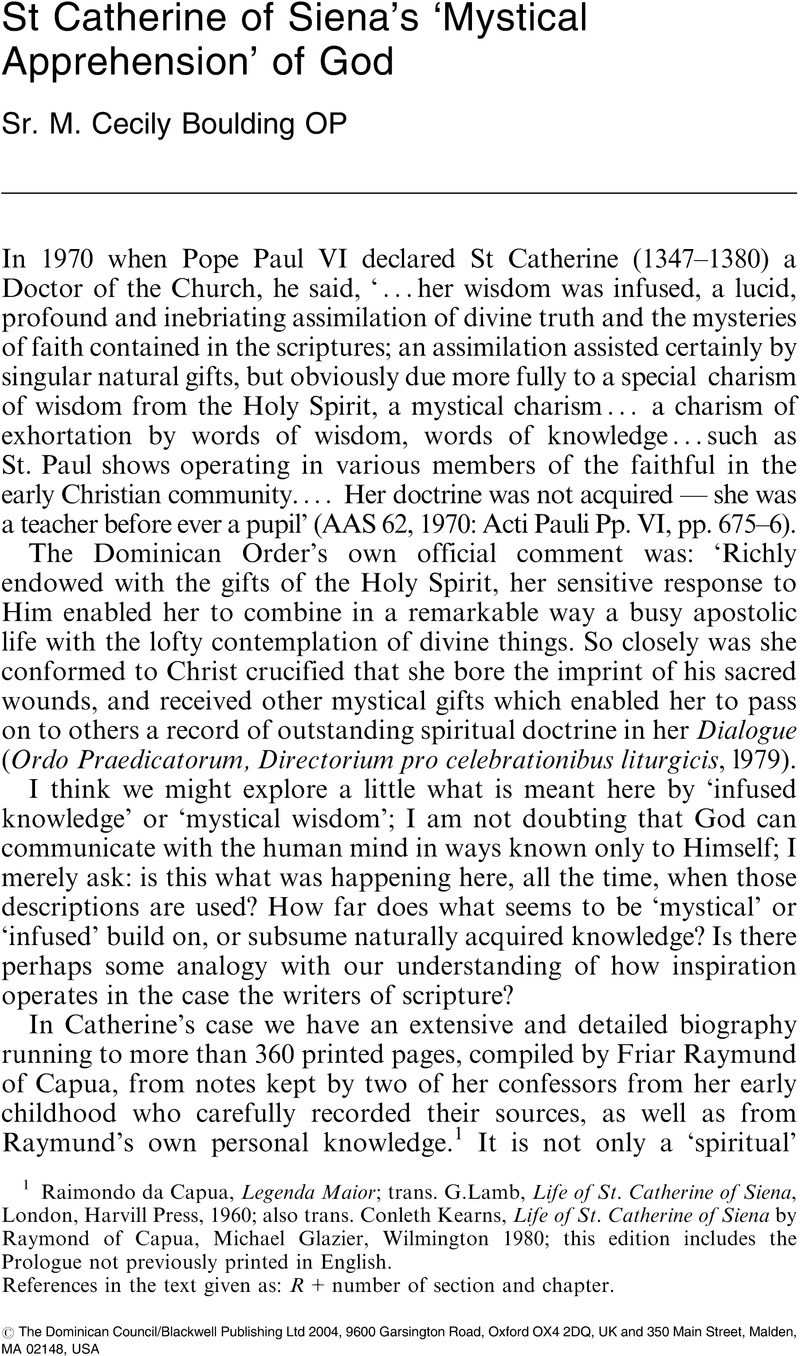No CrossRef data available.
Article contents
St Catherine of Siena's ‘Mystical Apprehension’ of God
Published online by Cambridge University Press: 01 January 2024
Abstract

- Type
- Catholic Theological Association 2003 Conference Papers
- Information
- Copyright
- Copyright © The Dominican Council/Blackwell Publishing Ltd 2004
References
1 Raimondo da Capua, Legenda Maior; trans. Lamb, G., Life of St.Catherine of Siena, London, Harvill Press, 1960Google Scholar; also trans. Conleth Kearns, Life of St.Catherine of Siena by Raymond of Capua, Michael Glazier, Wilmington 1980; this edition includes the Prologue not previously printed in English.
References in the text given as: R + number of section and chapter.
2 St.Catherine of Siena, Dialogue, trans. as The Orchard of Syon, wynkin de Werde, London 1519Google Scholar; ed. P.Hodgson & G.M.Liegey, EETS, OUP, 1966; also trans. Algar Thorold, London 1896; and Suzanne Noffke, Paulist Press, NY, 1980. References in text given as: D + chapter number.
3 ed. Tommaseo, Nicolo & Misciatelli, Piero, Le Lettere de S.Caterina da Siena, Siena, Giuntini & Bentivoglio,1913–22Google Scholar; trans, Noffke, Suzanne, Vo1.1. Binghamton, Mediaeval and Renaissance Texts and Studies, 1988. Trans. Suzanne Noffke, The Prayers of St. Catherine of Siena, Paulist Press, NY, 1983.Google Scholar
4 Noffke, Dialogue, Introduction identifies the influence of SS.Augustine of Hippo, Gregory the Great, Bernard of Clairvaux, Francis of Assissi, Thomas Aquinas, Cassian, Uhertino da Casale, Passaventi, Cavalca O.P., Jacopo da Voragine, O.P. & Colombini.
5 Cf.e.g: ST,Ia.56,a.3,resp. or De Potentia 7:5 & 14.
6 Cf. e.g: Confessions 1,1; 10,27 etc.


